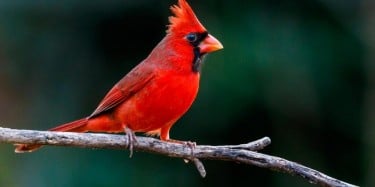
Calico cats are incredibly cute and readily recognizable due to their unique tricolor coat. A calico cat has a certain something about it, but you might be shocked to hear that it isn’t really a particular breed. The fact that several different cat breeds can have the colors of a calico cat is remarkable; it doesn’t make them any less beautiful or alluring to cat lovers.
And what exactly is a calico cat? All it is, is a certain hue of cat.
A domestic cat with three different colors on its coat is called a calico cat. Though they can differ significantly, these are usually orange, black, and white (the white being the predominant hue; a calico can be 25–75% white).
A basic calico’s signature colors are orange, black, and white, however there are more varieties that might be blue, brown, or cream in color. A calico cat’s hair typically appears in bright patches rather than being blended or swirled together, making them simple to recognize. A calico cat is identified by its brilliant orange, black, and white head and face.
Sometimes a calico cat is referred to as a tortoiseshell cat, and vice versa. They are not the same kind of cat, as we are here to tell you. Sure, there are slight color variances, but there are also parallels.
In addition to having a gorgeous blended coat with orange and black tones, tortoiseshell cats also don very little to no white fur. A calico cat’s coat is always partially or completely white, even if it’s only in little patches. Black calico cats are those that are primarily black with a hint of orange on them and very little white on them.
Another word you could come across is “diluted calico.” This is a calico cat whose colors are subdued or muted; for example, their reddish-orange tint is softer than its vivid orange color. It’s still officially a calico, so don’t worry!
How do the colors of calico cats come about?
Please be patient as we go a little scientific here. Let’s start by answering a frequently asked question: Are all calico cats female? As it happens, they’re not. While calico cats are nearly exclusively female, there are those that are male, as we’ve previously discussed in this brief read on calico cats. On the other hand, it is estimated that there are only one male calico cat for every 3,000 cats.
Every parent gives a set of chromosomes to their cat offspring; females have XX and males have XY. When a cat carries two XX chromosomes, it is considered to be female and possesses the calico coloring. Male cats often have an extra X chromosome, which is what gives them their multicolored coat. Many felines of the XXY gender chromosome may have something called Klinefelter’s Syndrome, which can make them sterile.
What is the Calico Cat’s History?
These gorgeous-looking calico cats—where have they come from? Since they are a particular style of coloring rather than an established breed, it is unclear exactly where they originated. On the other hand, the general consensus is that calico cats originated in Egypt. They traveled to nations around the Mediterranean, including Spain, Greece, France, and Italy, after being taken in by traders and employed on board ships to protect food supplies from mice and other vermin.
Globally, calico cats have gained immense popularity over the years. Actually, they’re regarded as a lucky charm. According to folklore, when Japanese sailors traveled across the Pacific, they would carry calico cats with them as a positive sign.
Characteristic
Some calico cat owners may say their cat has a quirky or even assertive personality, but that’s a common theme across many cats. For a truer expectation of character, grooming needs, and any potential health issues, you’d be better advised looking into the specifics of your cat’s particular breed for more accurate answers. What kind of temperament does a calico cat have? What kind of personality does a calico cat typically have? Does it need much grooming? And what type of diet is best for a calico cat? These are challenging questions to answer because the calico cat isn’t a breed type.
BREEDS OF CALICO CATS
There are numerous breeds of cats that might have the calico cat coloration, meaning there are numerous varieties of calico cats.
The Cat Fanciers’ Association (CFA) has published a color prefix chart that formally recognizes a number of breeds as having calico colors. The following are among them:
• American Bobtail,
• American Curl,
• American Shorthair,
• American Wirehair,
• British Shorthair,
• Cornish Rex,
• Devon Rex,
• Exotic Shorthair,
• La Perm,
• Maine Coon,
• Manx,
• Norwegian Forest Cat,
• Oriental,
• Persian,
• Scottish Fold,
• Selkirk Rex,
• Siberian,
• Sphynx, and Turkish Angora.
It is not surprising, nevertheless, to encounter various cat breeds with the calico cat colors.
You can see that there can be significant differences in the grooming requirements of calico cats by taking a look at those breeds. A Persian requires grooming virtually every day while the almost-hairless Sphynx needs nothing. By the way, if you need some advice on grooming your cat, we’ve got some great tips here.
The same holds true for traits. A Scottish Fold dog enjoys lots of love, affection, and cuddling, while an American Wirehair dog would rather be left alone. One calico cat can differ greatly from another since breed type and personality are far more strongly correlated than just color. The breed matters more than the color of the fur!
Common Health Issues
Male calico cats, regardless of breed, are susceptible to a genetic health condition called Klinefelter Syndrome, which results in sterility as well as behavioral, cognitive, and developmental difficulties, as well as a decreased bone mineral content and obesity.1 Female calico cats do not have health issues that are related to their color patterns, but they may have issues that are unique to their particular breeds, which is why it’s crucial to schedule routine visits with your veterinarian.
Maintaining a Calico Cat
Calico cats aren’t breed-specific, therefore their needs for food and grooming will vary. Although there isn’t a set “calico cat diet” you should adhere to, feeding your cat the best food possible is usually a good idea. Check out the best wet, dry, and raw cat food options from our friends and associates at Cat Food Advisor as well as specialist food for kittens.
Generally speaking, you should keep up a healthy routine and groom your calico cat as needed, depending on the type of fur on it. You may take care of many things yourself, such brushing your cat’s teeth, trimming its nails, and inspecting its fur for any indications of undesired fleas or ticks.
Overview of Breeds
Although the calico pattern is not a breed and does not strictly have any distinguishable personality qualities, owners and lovers sometimes claim that female cats with the colorful genes seem to have an extra dose of sass and zest because of the pattern. These gregarious, extroverted cats like interacting with other cats and their human families, but they also have a flair for independence.
Advantages
• striking pattern of colors
• extroverted and amiable
• A “good luck” cat
Cons
• not able to procreate because men are sterile
• Men are uncommon and more prone to health issues
• Perhaps difficult to locate a calico nearby
Additionally, you need to make sure that any recommended immunizations are current. Wag! wellness plans cover your cat for a variety of medical procedures, such as deworming and yearly booster shots.










